This post will help in understanding and setting the Do Not Display Network Selection UI Policy Using Intune. Here we are going to implement this policy using Intune’s Configuration Profiles. This policy’s main aspect is providing hands-on experience setting up the Do Not Display Network Selection UI Policy Using Intune.
Do Not Display Network Selection UI Policy configuration provides the ability to manage the interaction with network options displayed on the login screen. Enabling this policy setting ensures that alterations to the PC’s network connectivity state require signing into Windows.
Conversely, suppose you disable or leave this policy setting unconfigured. In that case, any user can modify the PC’s network connections, either disconnecting from or connecting to other available networks, without the need to sign into Windows.
This policy setting empowers you to govern the accessibility of network controls on the login screen. When this policy is enabled, it mandates that any changes to the PC’s network connectivity status can only be made after signing into Windows.
In contrast, if you disable or leave this policy unconfigured, any user can freely adjust the PC’s network connections, including disconnecting from or connecting to other available networks, without the necessity of signing into Windows.

- Allow Network Connectivity During Connected-Standby Policy using Intune
- Prohibit Connection to Non-domain Networks using Intune
Windows CSP Details DontDisplayNetworkSelectionUI
We will see Windows CSP Details for this Policy setting DontDisplayNetworkSelectionUI. This policy setting grants you control over the ability to interact with network settings from the logon screen. Enabling this policy ensures that altering the PC’s network connectivity status is restricted until a user signs into Windows. On the other hand, if you choose to disable or leave this policy unconfigured, any user will have the freedom to modify the PC’s network connections, allowing them to disconnect from or connect to other available networks without requiring a sign-in to Windows.
CSP URI – ./Device/Vendor/MSFT/Policy/Config/WindowsLogon/DontDisplayNetworkSelectionUI

Do Not Display Network Selection UI Policy using Intune
For Do Not Display Network Selection UI Policy Using Intune, follow the steps stated below:
- Sign in to the Intune Admin Center portal https://intune.microsoft.com/.
- Select Devices > Windows > Configuration profiles > Create a profile.
In Create Profile, I select Windows 10 and later in Platform, and select Profile Type as Settings catalog. Click on the Create button.
| Platform | Profile Type |
|---|---|
| Windows 10 and later | Settings Catalog |
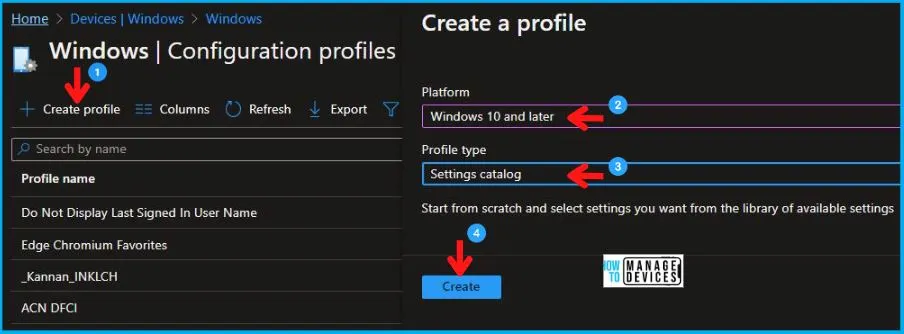
On the Basics tab pane, I provide a name for the policy as “Do Not Display Network Selection UI Policy.” Optionally, if you want, you can enter a policy description and proceed by selecting “Next“.
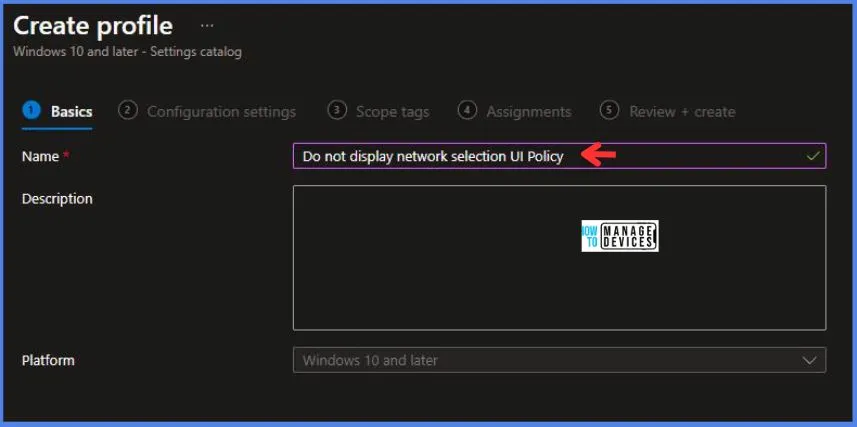
Now in Configuration Settings, click Add Settings to browse or search the catalog for the settings I want to configure.
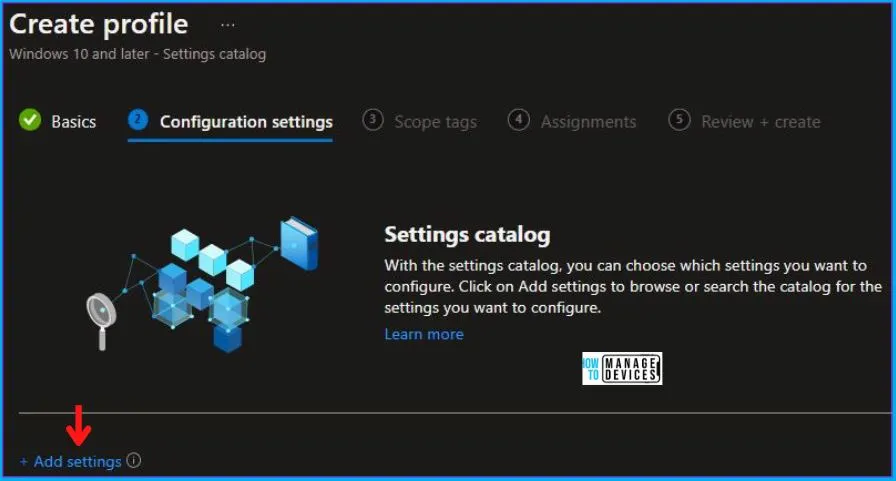
In the Settings Picker windows, I searched for the keyword Network Selection, I found the category Administrative Templates\System\Logon and selected this.
When I select that option as stated above, I see the sub-category Do not display network selection UI. After selecting that, click the cross mark at the right-hand corner, as shown below.
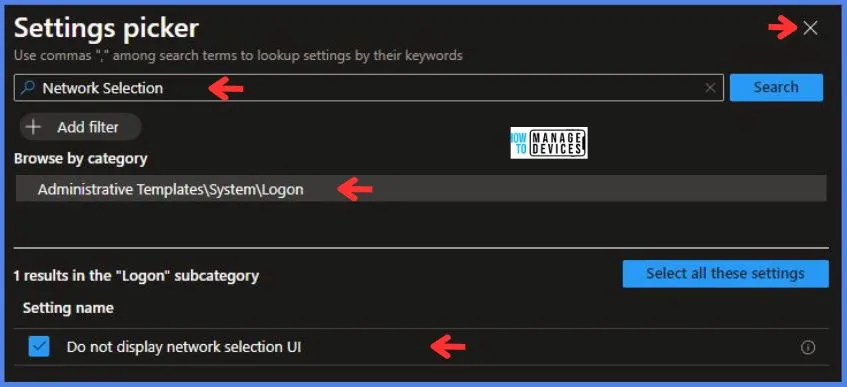
I kept the Do not display network selection UI as Enabled and clicked on Next to continue.
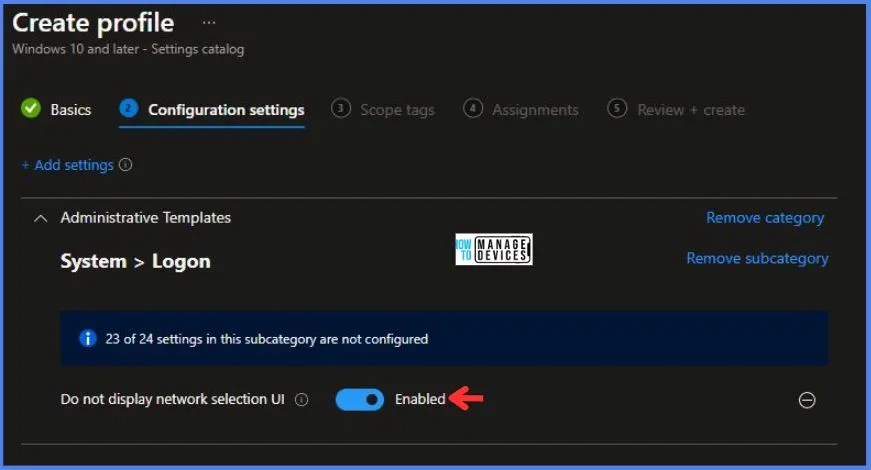
Using Scope tags, you can assign a tag to filter the profile to specific IT groups. One can add scope tags (if required) and click Next to continue. Now in Assignments, in Included Groups, you need to click on Add Groups, choose Select Groups to include one or more groups, and click Next to continue.
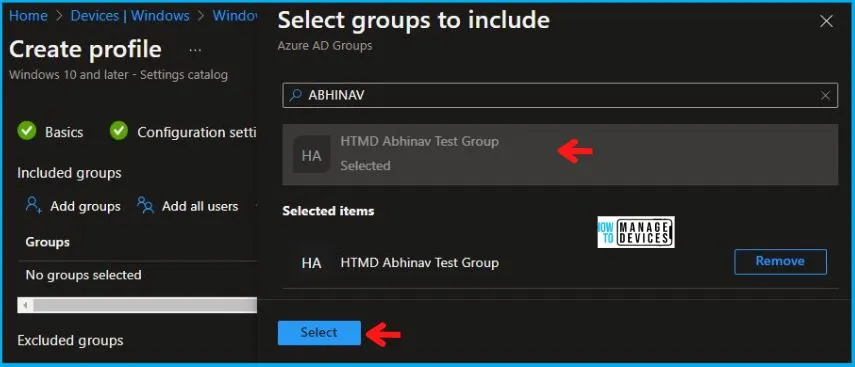
In the Review + Create tab, I review settings. After clicking on Create, changes are saved, and the profile is assigned.
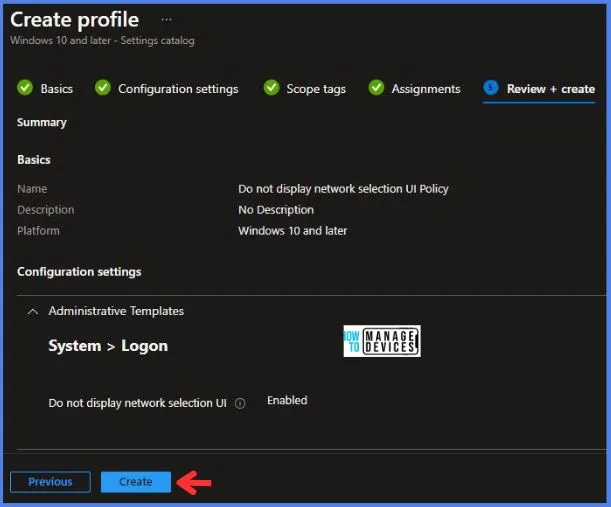
Upon successfully creating the “Do Not Display Network Selection UI Policy,“ notification will appear in the top right-hand corner, confirming the action. You can also verify the policy’s existence by navigating to the Configuration Profiles list, where it will be prominently displayed.
Your groups will receive your profile settings when the devices check in with the Intune service. The Policy applies to the device.
Intune Report for Do Not Display Network Selection UI Policy
From the Intune Portal, you can view the Intune settings catalog profile report, which provides an overview of device configuration policies and deployment status.
To track the assignment of the policy, you need to select the relevant policy from the Configuration Profiles list. Reviewing the device and user check-in status lets you determine if the policy has been successfully applied. If you require more detailed information, you can click on “View Report” to access additional insights.
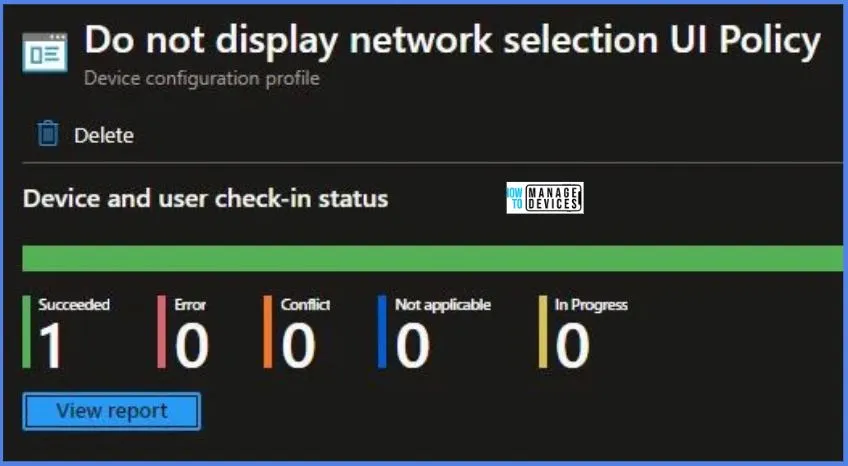
Intune MDM Event Log
To verify the successful implementation of String or integer policies on Windows 10 or 11 devices through Intune, you can leverage event IDs 813 and 814. These event IDs provide valuable insights into the application status of the policy as well as the specific value assigned to the policy on those devices. In the case of this particular policy, the value is a String and is linked to the event ID 814.
By analyzing these event IDs, you can gain a clear understanding of the policy’s application status and the corresponding value associated with it on the devices in question.
To confirm this, you can check the Event log path – Applications and Services Logs – Microsoft – Windows – Devicemanagement-Enterprise-Diagnostics-Provider – Admin.
MDM PolicyManager: Set policy string, Policy: (

